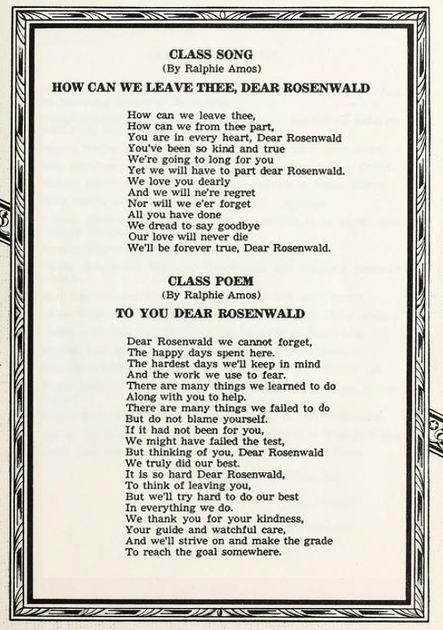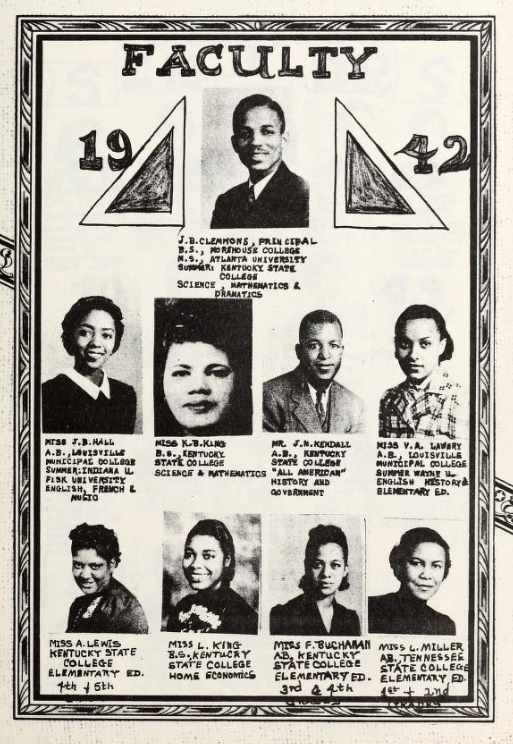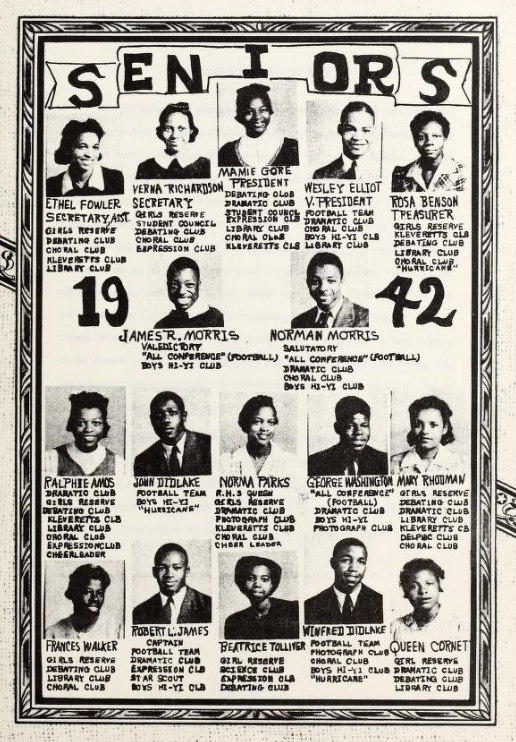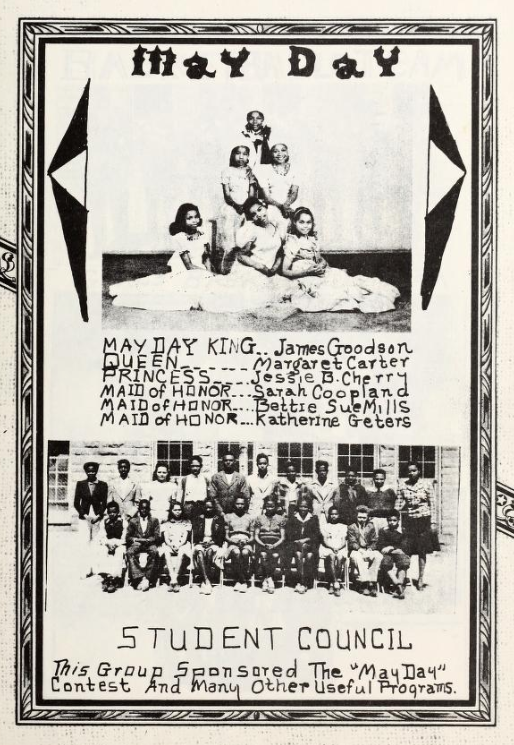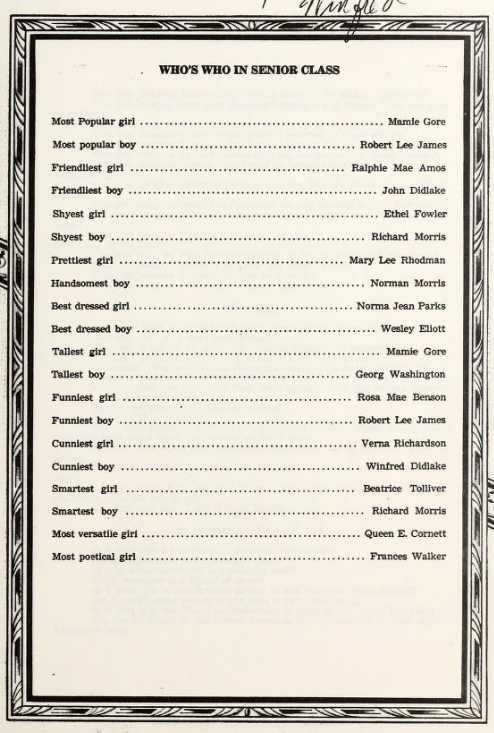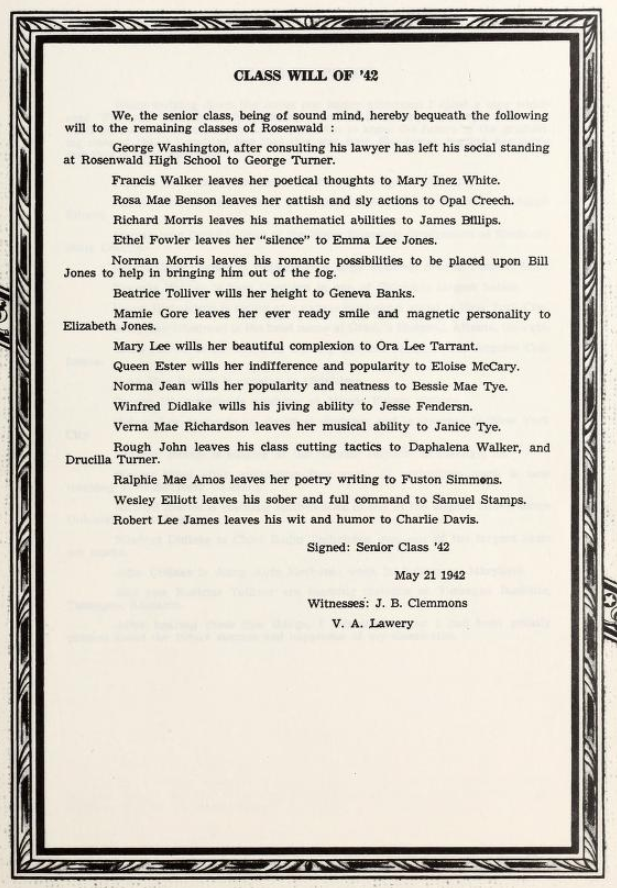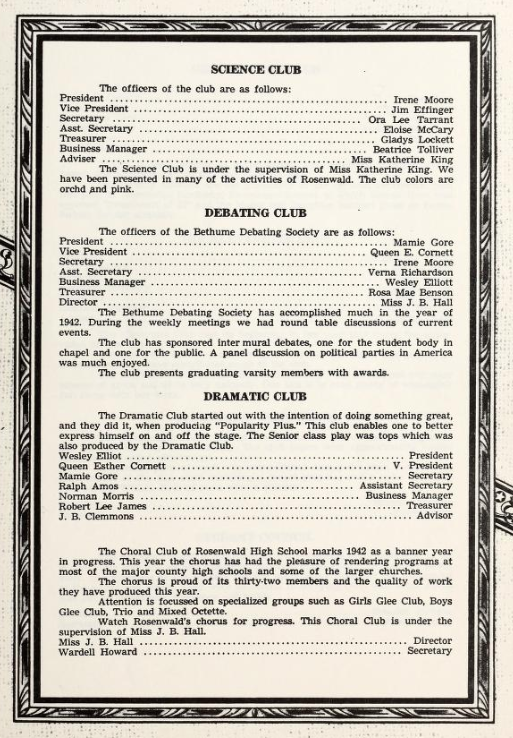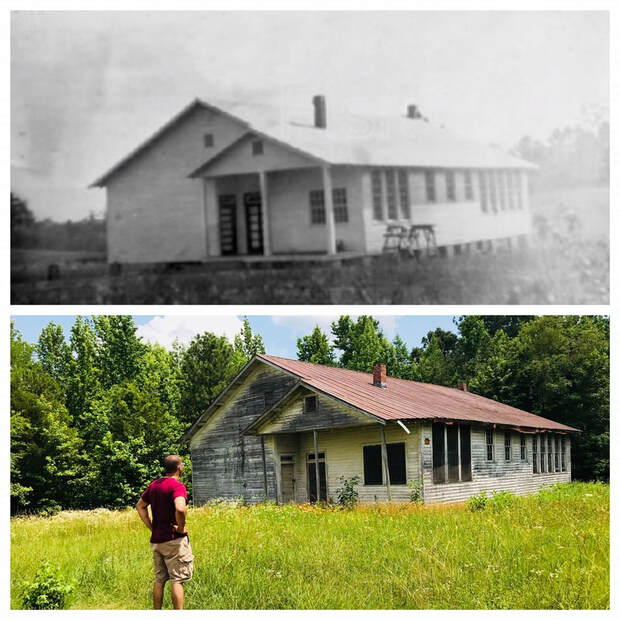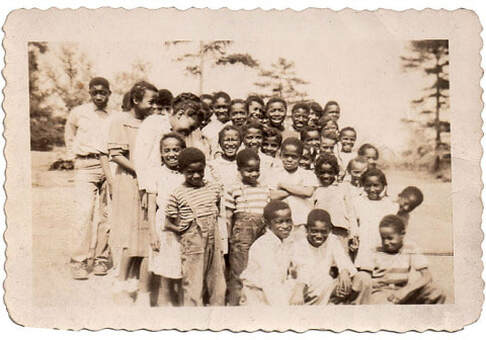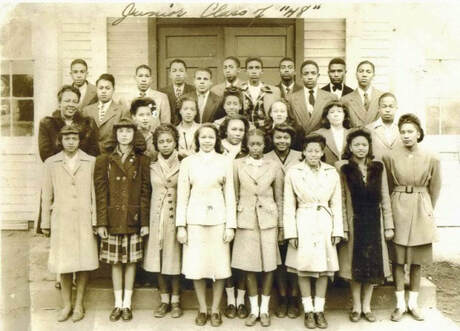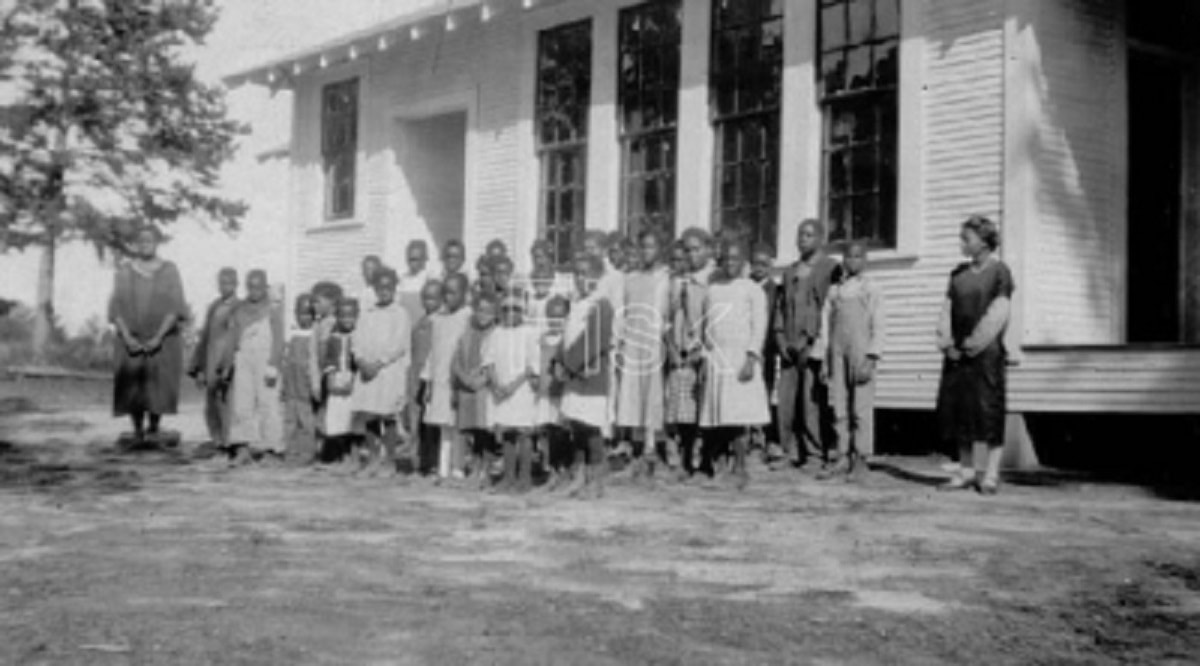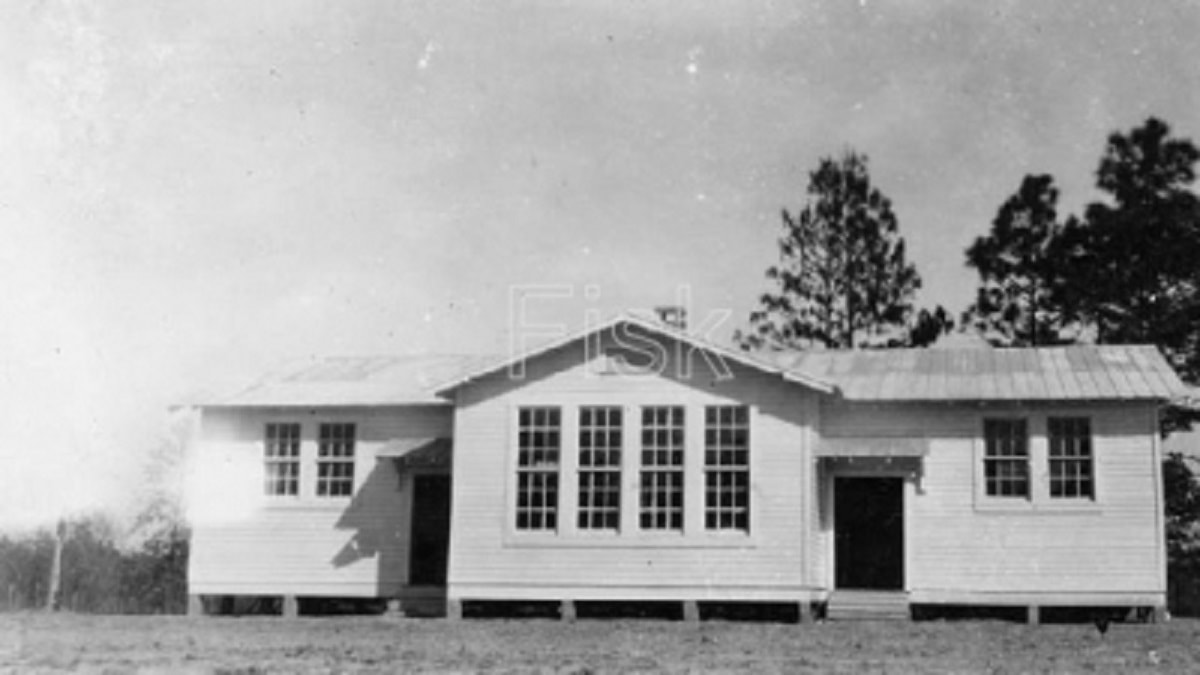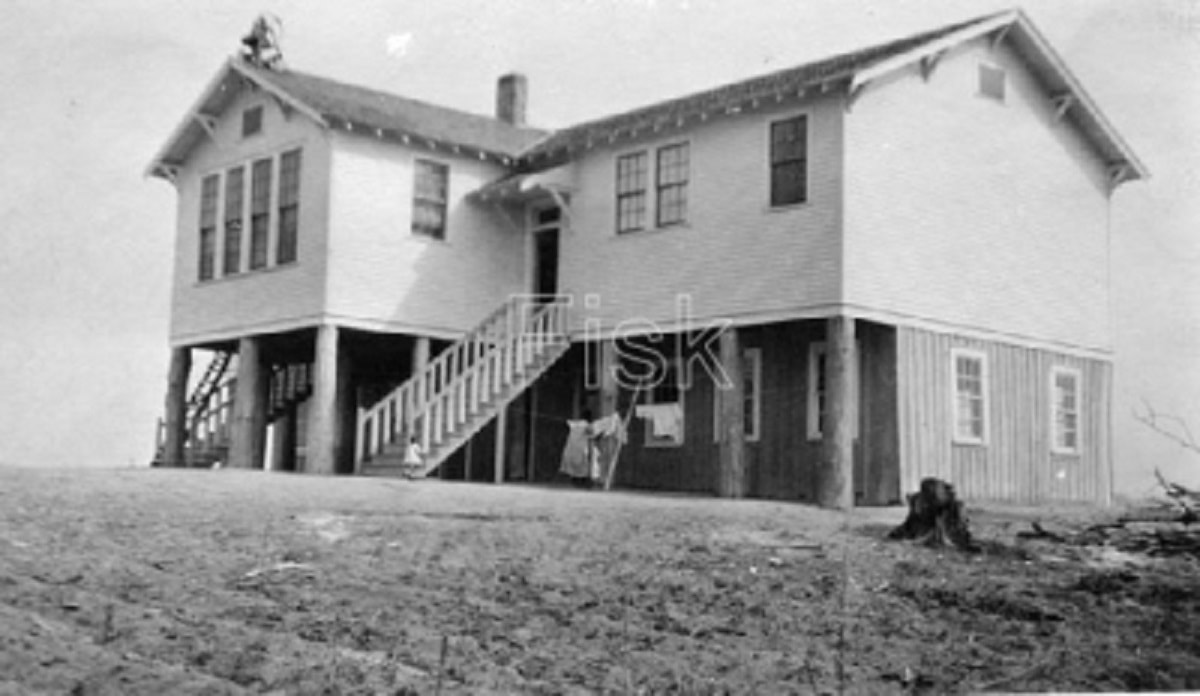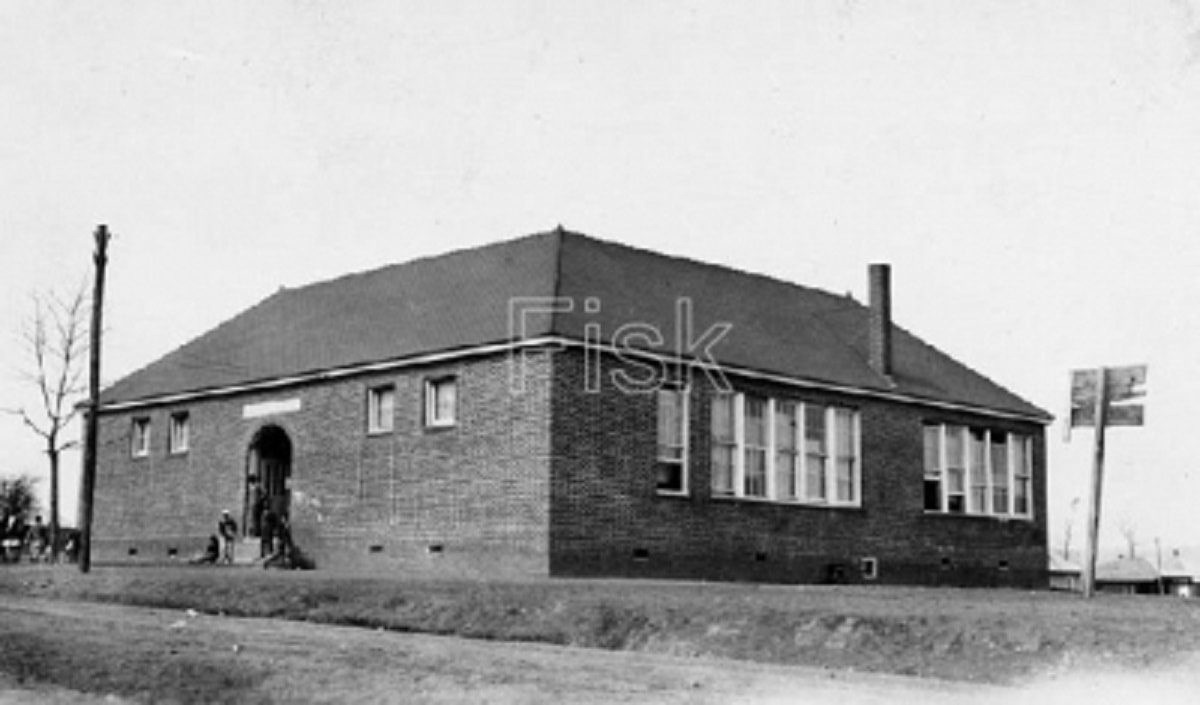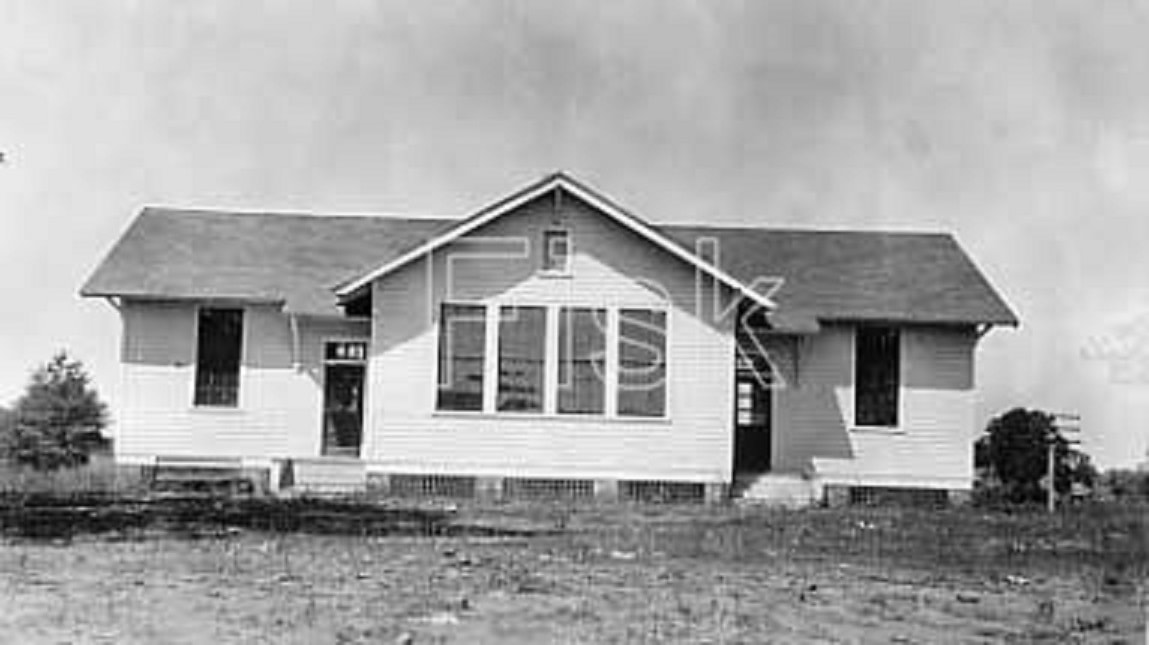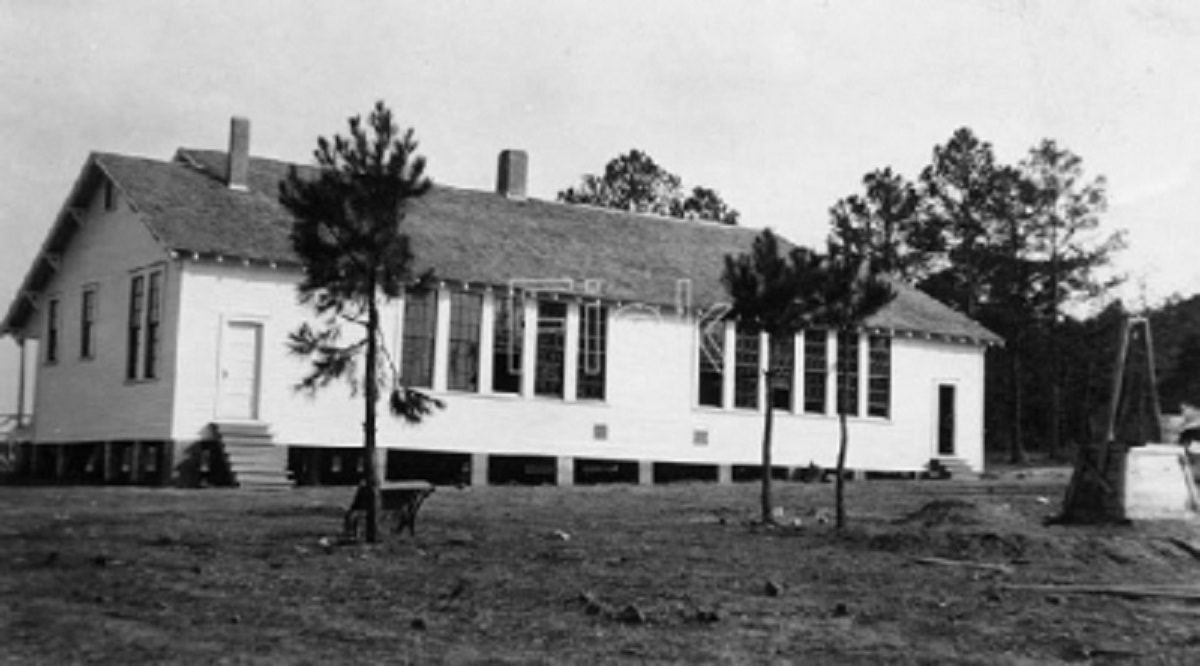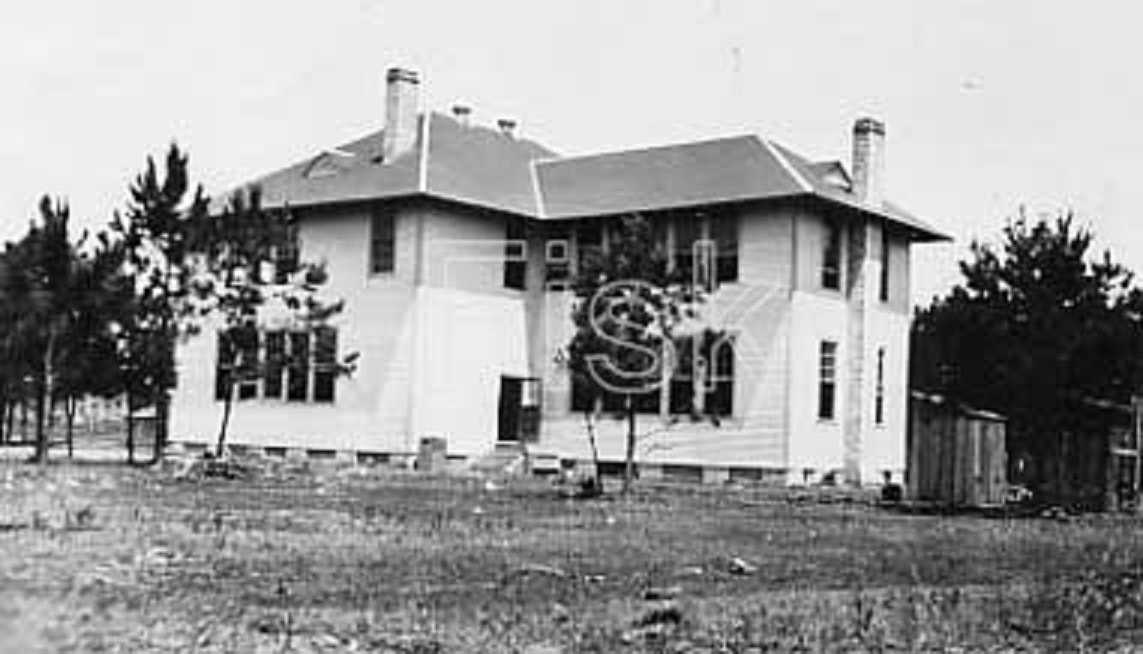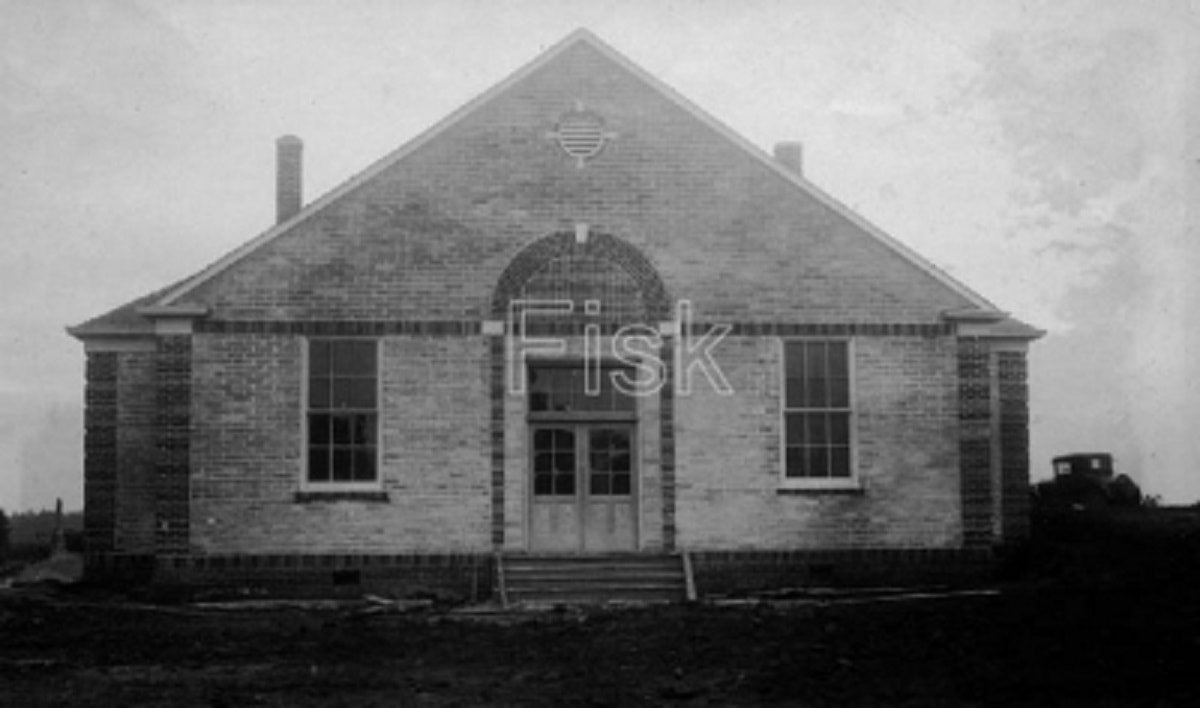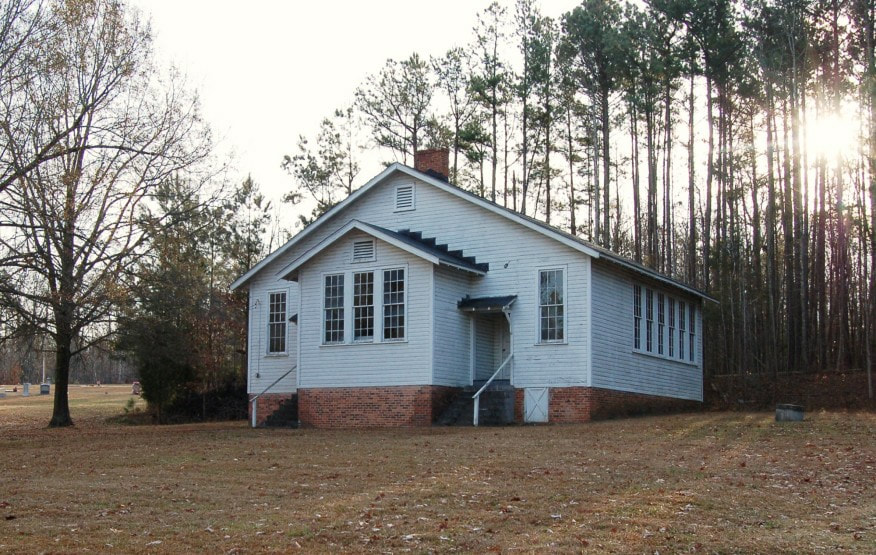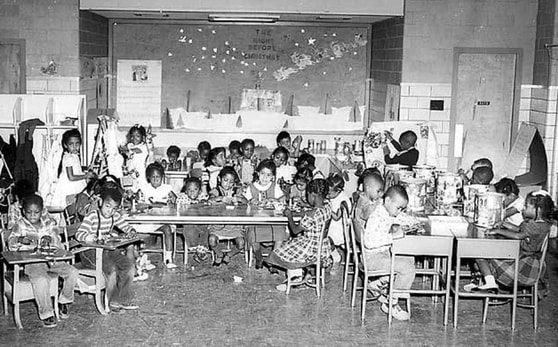Gallery of Selected Rosenwald Schools
|
Top photo: Carol Boyd School in Bracey, VA, when it was built in 1919.
Bottom photo: Curtis Valentine stands in front of the school today. His grandfather attended the school. n.d., photos courtesy of Mr. Valentine. |
|
While the Rosenwald Schools appeared to be traditional buildings from the outside, they incorporated many design features that were innovative at the time. Classrooms were separated by movable partitions, so they could be combined into a larger space. Often there was an additional room for cooking and shop classes. The larger, community schools had an auditorium as well as a library. All the rooms had tall ceilings with very large windows, and the building itself was oriented to maximize natural light. Breeze windows allowed for cross-ventilation, and the buildings were elevated off the ground to facilitate cooling. Rybczynski calls this, “green architecture by necessity.” [55]
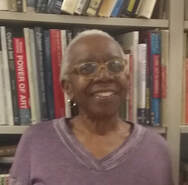 La Verne Gray. March 22, 2019. La Verne Gray. March 22, 2019.
"One of the things I really, really liked about Ridgeley School were the big windows. These big windows, that let the sun come in, and painted the room all day. And then in the afternoon, you could see the sun disappear to the other side. It was exciting, it was moving, it was energy. Sometimes I think those big windows really was one of the first things that clued me in to wanting to be an architect, so I could do things with lights and windows." - La Verne Gray [56] [Click below to hear the audio clip]
|
[All images below from the Fisk online database, n.d., unless otherwise noted.]
|
The Rosenwald Fund expanded support to African-American arts
and higher education. |
